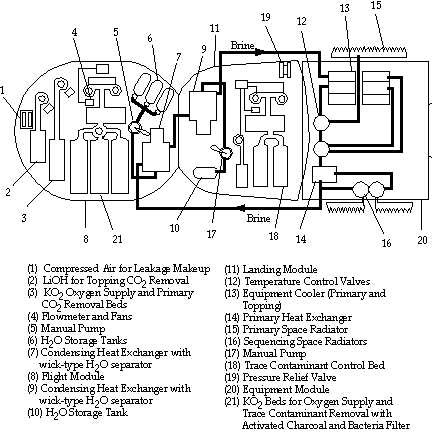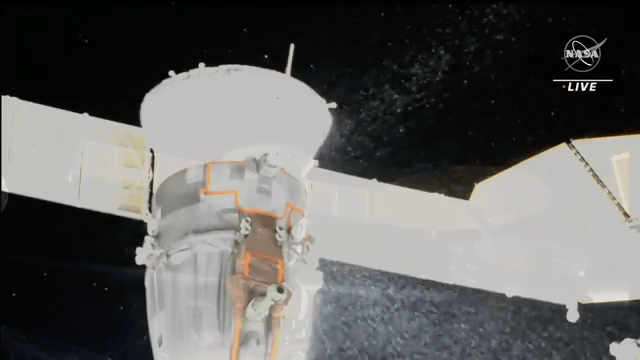Happy Holidays everyone. I hope you spent the weekend with your loved ones!
I didn’t expect to write about this again, but I found the explanations of what happened to the Soyuz capsule fascinating and engaging. So, here goes!
To bring you up to speed, the Soyuz capsule started spewing what appeared to be a liquid two weeks ago. Turns out it was the coolant in an external loop of the cooling system on the MS-22 Soyuz.
We are left with a couple questions. What caused the leak, and what does this mean for the crew relying on that capsule to get home?
First, it was the astronauts/cosmonauts who saw the leak from the Soyuz docked to the International Space Station (ISS). They reported what they saw and the Russian ground controllers realized they had an issue. The cooling system on the Soyuz was warming up. The entire coolant in that loop leaked out within 18 hours.
Russian officials say they see a 1-mm hole in that external loop. That is very small. They see a larger divot at that area (about 4-mm), which could suggest a micrometeorite hit. But at this point there is no definitive cause for this leak. There was also a meteor shower at the time of the leak. But the meteor shower has been ruled out because its direction could not have impacted the Soyuz in the spot that was leaking.
The briefing was held by the head of the Space Station for NASA, and the head of Human Space Exploration for Roscosmos, Sergei Krikalev, who has steadied the Russian Space program’s dealings with the US.
Both officials say they want more video and photographs to help determine what caused the leak. The more pressing problem is what to do with the Soyuz? Having lost this cooling loop, can it still transport three men back to Earth or will they need to be rescued?

The external loop is part of the cooling system for the Soyuz’s crew compartments. There are two cooling loops. An internal loop pulls heat out of the crew compartment and exchanges that heat to the second loop, the external loop, which expels the heat into space. Without that external loop, the internal loop has nowhere to dump its heat and won’t be able to cool the cabin for the cosmonauts and astronaut after some period of time.
What the Russians want to know is how fast the cabin will heat up and whether they can use the damaged Soyuz to get the men home. “It's basically thermal analysis we need to do to see how rapidly temperature is going to rise in two compartments,’ Krikalev told reporters.
He’s talking about the crew compartment that reenters the atmosphere and an orbital module which provides more space and is used for docking. It is jettisoned before reentry. Right now both compartments are being cooled by leaving the hatches open and using the ISS air to circulate through.
There are options. If it takes a while for the capsule to heat up in simulations, the Russians may be able to do a normal reentry. If time is a factor, the cabin is heating up too fast, they could do what is called an expedited return. Basically undock and make a quick reentry.
If the conclusion is that neither of those options is safe, Krikalev says the Russians will send up the next planned Soyuz a couple weeks early unmanned. That means by late February a new Soyuz would be available for the crew. This is the rescue mission
.
NASA’s Joel Mantalbano told reporters the damaged Soyuz would return to Earth as a test mission to see how hot the crew cabin actually gets without that external cooling loop operating.
There is still a lot to learn about what happened to the Soyuz and how the crew will come home. The good news is that there are options.






Excuse me. Hand up here in the back. Um, I vote for the rescue mission. Right?